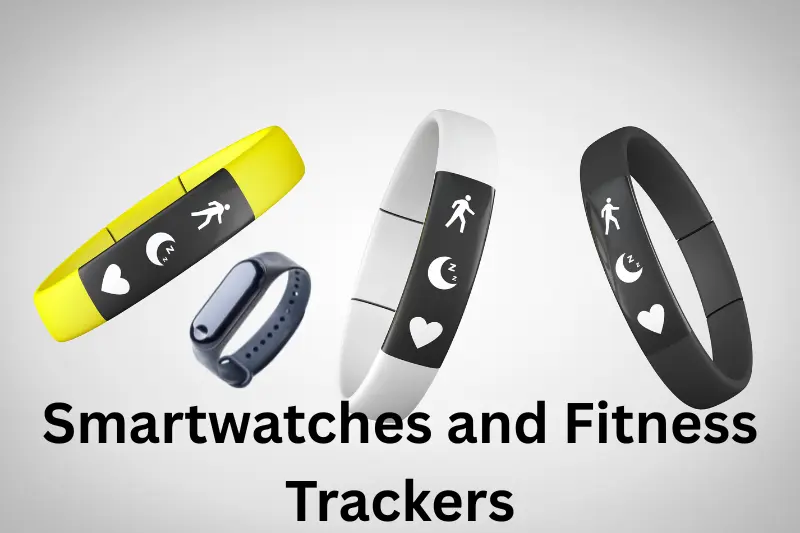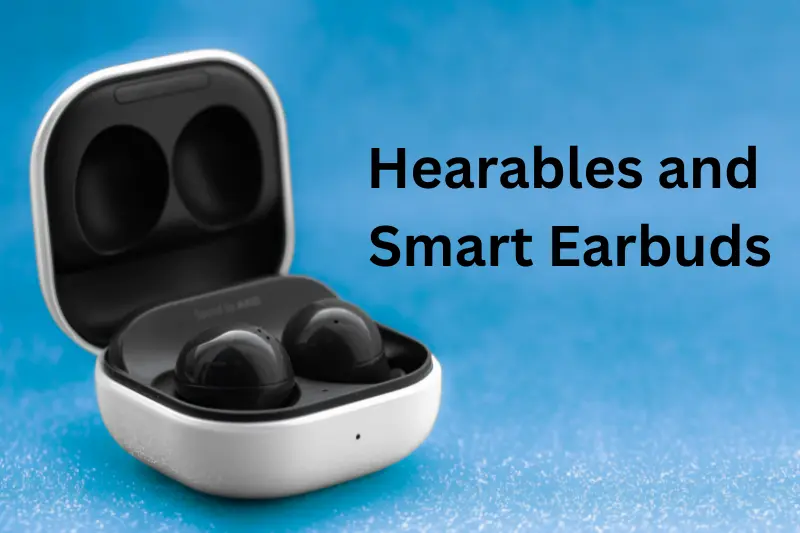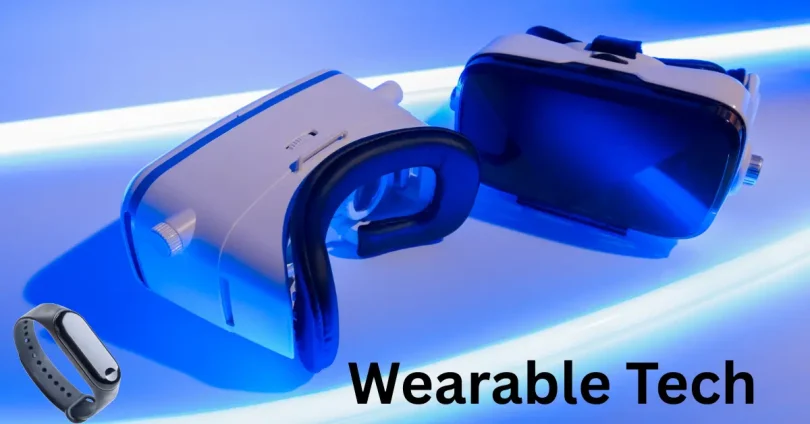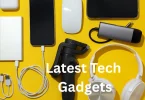Staying connected, informed, and healthy has never been easier—thanks to the rapid rise of smart devices we can wear. These modern innovations have seamlessly blended into our daily lives, not just as accessories but as powerful tools that enhance how we live, move, and stay in tune with our well-being. Whether you’re tracking your heart rate during a workout, receiving notifications on the go, or simply trying to improve your sleep, wearable tech is changing the game.
From stylish smartwatches and advanced fitness bands to revolutionary smart glasses and health-monitoring patches, wearable tech has evolved far beyond simple step counters. It’s shaping the future of personal tech—where convenience, health, and productivity all meet in a device small enough to wear on your wrist or wrap around your finger.
As we explore this dynamic world, you’ll discover how wearable tech is not just a trend—it’s a transformative shift that’s here to stay.
What is Wearable Tech?
Understanding the Concept
Wearable tech, or wearable technology, refers to electronic devices that can be worn on the body, either as accessories or as part of the clothing. These devices often connect to the internet or other devices, offering functionality beyond standard analog uses.
Core Features of Wearable Devices
- Connectivity: These devices often pair with smartphones or the cloud to sync data in real-time.
- Sensors: Equipped with various sensors, they track movements, body metrics, location, and even surrounding environmental factors.
- Interactivity: Many wearables include touchscreens, voice recognition, or gestures to interact with users.
Categories of Wearable Tech
Smartwatches and Fitness Trackers

Smartwatches and fitness bands remain the most common types of wearable tech, combining style with function.
Key Functionalities:
- Heart Rate Monitoring: Real-time pulse tracking for health insights and workouts.
- Sleep Analysis: Detects sleep patterns, quality, and duration to help optimize rest.
- Step and Activity Tracking: Logs your daily movement, calories burned, and distance.
- Smart Notifications: Displays calls, messages, and app notifications directly on the wrist.
- Voice Assistants: Integrated AI like Siri or Google Assistant for hands-free tasks.
Popular Devices in 2025:
- Apple Watch Series 9 with temperature sensing and enhanced battery
- Fitbit Charge 6 offering deeper stress management features
- Samsung Galaxy Watch 6 with improved body composition analysis
Smart Glasses and Augmented Reality
Smart glasses bring information directly to your line of sight, combining style with immersive experiences.
Core Features:
- Heads-Up Display (HUD): Real-time data overlays like weather, directions, or messages
- Voice Control: Allows hands-free functionality for multitasking
- AR Integration: Projects graphics or visuals onto the real world, useful for work, gaming, or navigation
Notable Trends in 2025:
- Meta’s new AR glasses offer a slimmer design with improved virtual overlays
- Google’s updated smart eyewear focuses on real-time translation and productivity
- Xreal Air 2 Pro brings enhanced cinematic and gaming experiences
Smart Clothing and E-Textiles
Smart clothing is one of the most innovative areas in wearable tech, integrating sensors and circuitry directly into the fabric.
Advantages:
- Seamless Monitoring: Tracks posture, movement, temperature, and more without extra accessories
- Fashion + Function: Looks like regular clothing but offers advanced capabilities
- Sports and Medicine: Used for athlete training and rehabilitation monitoring
Current Applications:
- Nadi X Yoga Pants with built-in sensors for pose correction
- Hexoskin smart shirts measuring ECG, respiration, and movement
- Levi’s Jacquard by Google, allowing gesture control via your jacket sleeve
Hearables and Smart Earbuds
Not just for music, hearables are turning into AI-driven, voice-activated assistants with health features.

Key Highlights:
- Fitness Tracking: In-ear sensors monitor heart rate and oxygen levels
- Real-Time Translation: Instantly translates foreign languages while traveling
- Voice Access: Interact with voice assistants, make calls, or control smart devices
Devices Leading the Market:
- Sony LinkBuds S with adaptive sound control
- Bose QuietComfort Ultra Earbuds for health and immersive audio
- Apple AirPods Pro 2 with spatial audio and temperature tracking in 2025
Medical and Health Wearables
Healthcare is a massive beneficiary of wearable tech, with devices helping patients and professionals monitor chronic conditions.
Features and Benefits:
- Continuous Monitoring: Blood glucose, heart rhythm (ECG), and blood pressure
- Remote Patient Care: Data sent to healthcare providers in real-time
- Early Detection: Alerts for anomalies and warning signs before symptoms worsen
Innovative Devices:
- Dexcom G7 for continuous glucose monitoring with smartphone integration
- Withings ScanWatch 2 with advanced cardiovascular sensors
- Omron HeartGuide—the first wearable blood pressure monitor
Latest Trends in Wearable Tech
AI Integration
Wearables are becoming smarter by the day, thanks to embedded AI that analyzes behavior and adapts over time.
Real-World Use Cases:
- Smartwatches recommending workouts based on mood and fatigue
- AI glasses recognizing faces and remembering names for users with memory loss
- Wearables detecting emotional cues through physiological signs
Extended Battery Life
Battery technology has evolved significantly, allowing longer usage times without compromising functionality.
Improvements in 2025:
- Solar-powered fitness trackers
- Kinetic charging from movement
- Smartwatches lasting up to 10 days on a single charge
Sustainable and Eco-Friendly Devices
Sustainability is a growing priority in the wearable tech space.
Innovations:
- Use of biodegradable plastics and recycled metals
- Power-efficient chips that reduce energy consumption
- Eco-friendly packaging and responsible e-waste recycling programs
Fashion Meets Function
Tech is now a fashion statement. Leading brands are collaborating with fashion designers to create stylish and functional wearables.
Top Collaborations:
- Montblanc Summit 3 with luxury styling and Wear OS
- Tag Heuer smartwatches merging traditional craftsmanship and smart features
- Adidas and Samsung’s co-branded smart sneakers that monitor stride and pressure
Scroll a little further and thank yourself later.
Powerful Ways AI in Daily Life Impacts You Now
Breakthrough Machine Learning Applications You Must See
Unlock Your Potential with the Best Productivity Apps of 2025
Top Picks: Best New Software Releases You Must Try Today
Benefits of Wearable Tech
Improved Health Monitoring
Wearables allow people to manage their wellness proactively.
- Detect irregularities early before they escalate
- Enable chronic condition management without hospital visits
- Empower users to take charge of their own fitness goals
Boosted Productivity
Wearables like smartwatches and glasses make it easier to stay on task.
- Get reminders and alerts without picking up the phone
- Access schedules, calls, and to-dos at a glance
- Use voice assistants to complete tasks faster
Enhanced Safety
Safety features are increasingly built into devices for real-time assistance.
- Fall detection and emergency SOS
- Location sharing with trusted contacts
- Panic alerts triggered with simple gestures
Challenges in Wearable Tech
Data Privacy and Security
As wearables collect sensitive data, concerns over privacy continue to grow.
Key Issues:
- Location tracking without consent
- Biometric data breaches
- Misuse of health data by third-party apps
Limited Compatibility
Some wearables only work within certain ecosystems, limiting user flexibility.
- Apple-only features for Watch users
- Android-specific benefits on certain fitness trackers
- Proprietary apps restricting device interoperability
Cost vs. Value
High-end wearable devices can be expensive, and not everyone sees the value immediately.
- Consumers demand affordable yet functional wearables
- Subscription-based services like Fitbit Premium add recurring costs
The Future of Wearable Tech
Implantables and Bio-Wearables
The next wave of innovation lies in wearables that become part of us.
What’s Coming:
- Microchip implants for secure authentication
- Bio-sensors under the skin for blood pressure and hydration tracking
- Smart tattoos that light up or change color based on body data
Mental Health and Emotion Detection
Future devices are exploring how to track and improve mental well-being.
- Stress monitoring through skin temperature and voice tone
- Real-time alerts when emotional distress is detected
- AI-driven recommendations for meditation or rest
Workplace Integration
Wearables will increasingly play roles in job safety, communication, and efficiency.
- AR glasses guiding remote workers and technicians
- Smart helmets with hazard detection for construction workers
- Employee health monitoring for stress and fatigue management
Wearables for Kids and Seniors
Technology is becoming more inclusive, addressing the needs of all age groups.
For Kids:
- GPS-enabled watches with parental controls
- Educational wearables that reward learning
For Seniors:
- Fall detection, medication reminders, and heart monitoring
- Large-button interfaces and easy charging options
Tips for Choosing the Right Wearable Tech
Understand Your Needs
- Fitness? Health? Productivity? Choose based on your primary goal.
- Do you need waterproofing or rugged features?
- How important is battery life to you?
Check Compatibility
- Make sure your device supports your phone’s operating system
- Look into app features, sync ability, and third-party integrations
Look for Comfort and Design
- Choose something you’ll want to wear daily
- Size, strap material, and display brightness matter
Consider the Brand’s Ecosystem
- Some ecosystems offer more cohesive experiences, like Apple’s and Samsung’s
- Think about future device additions and long-term usability
Conclusion
In a world that’s constantly connected, efficient, and ever-evolving, one innovation continues to quietly but profoundly change how we live, work, and thrive—wearable tech. Whether you’re on a fitness journey, managing your health, or seeking smart style, embracing this technology could be your next step toward a smarter tomorrow.
FAQs
What are the most popular types of wearable tech?
The most popular types include smartwatches, fitness trackers, smart glasses, hearables like earbuds, and smart clothing designed for health and activity tracking.
How does wearable tech help with health?
Wearables monitor heart rate, sleep, stress, and even detect irregularities early. Some devices also track blood pressure, glucose levels, and encourage better habits through real-time feedback.
Can wearable tech be used without a smartphone?
Some wearables offer standalone features like built-in GPS, music playback, and calling, but most still require a smartphone for full functionality and syncing.
Is wearable tech safe to use daily?
Yes, wearable tech is generally safe. Most devices emit very low radiation and are tested for daily use. Just make sure to clean them regularly and follow the manufacturer’s usage guidelines.
Are there wearable tech options for seniors?
Absolutely. Many smartwatches and fitness trackers now come with large displays, fall detection, emergency SOS, and health monitoring features designed specifically for seniors.




